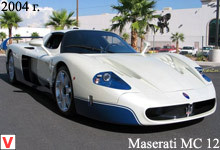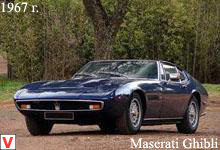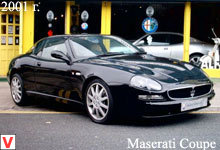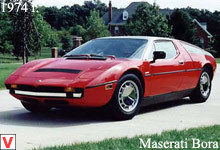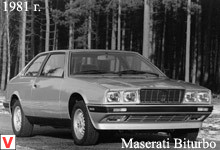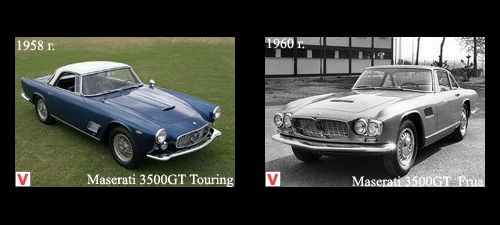
In 1957, the company Maserati was in a very difficult financial situation because of the high costs in the racing program. Adolfo Orsi (owner of the company) gives the command to focus on cars that are successful in the market. And the market at that time demanded a large car that combines the properties of a high-end racing design with grace, luxury and quality. Thus, the Maserati 3500GT model was born. The debut took place at the Geneva Motor Show. The car was positioned as a successor to the A6G model and was a mixture of a road and a racing car.
During its creation, the experience of the company gained in the process of many years of work on sports models was involved. Work on the creation of experimental bodies were entrusted to several well-known Italian body builders. For the show at the Geneva Motor Show in 1957, the works of two ateliers - Allemano and Touring - were selected, and after studying the reaction of the public, the company chose the excellent work of Touring. Working on the model, Touring experts applied their proprietary ultra-light bodywork system, though in an improved version. At this time, the art of tinsmiths, manually knocking out the elements of the body, gave way to stamping panels with a press.
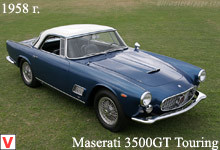
This, however, did not affect the traditionally high quality of Touring products, as well as the expressive and at the same time discreet design. In addition to Touring and Allemano, other leading ateliers have also offered their body styles - Frua, Bertone, Ghia and Vignale. However, most of these versions remained single samples, in small batches only the coupe and the Vignale Spyder (designed by Michelotti) were produced on a shorter base from 2600 to 2500 mm. Maserati 3500GT was completed with a magnificent 6-cylinder in-line engine of 3485 cm³. This power unit was taken from the Maserati 350S racing model, but it was deformed for use on road versions, as well as to improve reliability.
Two camshafts in the cylinder head had a chain drive, whereas the traditional for racing engines was more expensive and noisy toothed. The fuel supply system was decorated with a battery of three Weber two-chamber carburetors, and the reliability of ignition was provided by a pair of candles in each cylinder. The engine developed power of 220 horsepower at 5500 rpm. and decent torque - 343 Nm. Paired with a four-speed, fully synchronized German-made ZF gearbox, the engine was housed in a specially designed tubular chassis.
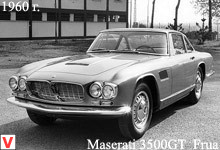
The chassis design was classic for this type of car: a welded frame of round tubes of various diameters, on which was installed a tubular farm, which served as the power frame of the body. Front suspension - independent, lever, with springs and shock absorbers. The rear one is a rigid axle from the English company GKN-Salisbury on semi-elliptical springs and shock absorbers. Initially, the car was completed drum brakes. Since 1959, the model as an option began to install front disc brakes Girling with an amplifier, as well as spiked wheels with a central wing nut.
Unlike all previous road cars, the Maserati 3500GT had a high-quality interior finish and elaboration of all the details of the design. To this end, the chief designer of the company Giulio Alfieri (Giulio Alfieri) spent a lot of time studying the best models of British manufacturers. As a result, the concept of a two-door body was developed, having sufficient interior space for two full-size front seats and two children's seats in the rear. The interior was notable for its functionality and moderate luxury. One of its important merits was a wonderful circular review. In 1960, the 3500GT model range was waiting for a number of innovations.
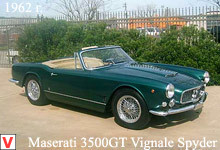
Front disc brakes became standard equipment, and as an option the car could be equipped with a five-speed gearbox. In 1961, the vehicle was equipped with a system of mechanical fuel injection Lucas, which allowed the company to add to the name 3,500 letters GTI. Thus, the 3500GT was the first Italian car equipped with a fuel injection system. The power of the power unit was increased to 235 hp, and the maximum speed of the model was 240 km / h. More "charged" sports version of the motor developed to 270 hp and accelerated lightweight car to 250 km / h. Thanks to the Maserati 3500GT, the company managed to get out of a difficult situation rather quickly.
For seven years, 1983 machines were made, and among the owners of stylish two-door were mostly people of high society - from the Prince of Monaco Rainier III to Alberto Sordi and Anthony Quinn.

